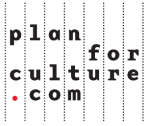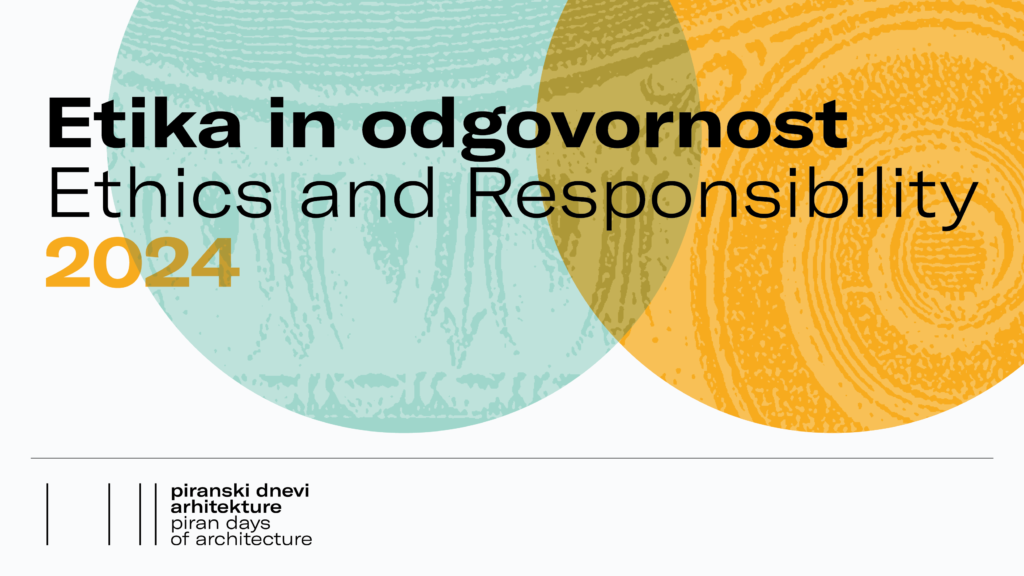Rethinking the architectural signpost that points us towards an interdisciplinary future of the profession striving for a common good of people and the planet.
An exhibition, a workshop, and a round table discussion create the space for discourse about the future of the architectural profession while the exhibited projects raise questions on where we are going and what we want in our environment, and search for tools to help us achieve a wholesome future.
Designing the space for the future can be described through three main aspects which all projects have in common and are used to define quality architecture. In this project, we call these aspects “material”, “context” and “society”.
Material discusses the tangible matter of future architecture. It is essential that building materials are recycled as much as possible, that new materials are manufactured non-extractively, that by removing them from nature, the wider geology, society, or ecosystems are not harmed, and that vernacular building techniques are maintained and used to create new methods of implementing bio-based materials.
Context deals with the existing tissue of society, buildings, locations and areas. Tangible structures can be infused with a new programme, existing neighbourhoods improved with new content, and new content presented to solitary and abandoned buildings. Adaptive re-use is one of the best ways to counter energetically and materially wasteful new buildings, as well as the degradation of cultural landscapes.
Society creates culture and accentuates the urgency of the social role of architecture and spatial planning. The role of the architect – more than just a role of an independent professional co-ordinating the building process – is the role of a mediator between agents, inhabitants, visitors, builders, investors, society, nature, and the state. The most successful projects are created with the participation of the public, by discussing the activities, wants, and needs. Architecture impacts the society in every environment. The question is what kind of a society we want.
The three concepts merge into several subconcepts and intermediary ideas, areas of interchange, and new meanings. We welcome any multi-facetedness, indeterminacy, and eclecticism which challenges our dialogic view of the world and contributes to a more plural, multidimensional perception and the creation of a common environment.
We present projects from a wide cultural and geographic region, and we aim to establish a wide network of reference transcending national borders. The selection of projects is somewhat arbitrary; they could be replaced by other examples. More important than a given specific project is the groundbreaking concept each of them implements, the idea by means of which the project fosters reflection and affects the development of architecture in the future.
Presented projects
Assemble Studio: Folly for a Flyover, London, UK (2011), JAJA Architects: Gigantium Urban Space, Aalborg, DK (2018), Clementine Blakemore Architects: Wraxall Yard, Dorset, GB (2022), B-Architecten: Qville, Essen, BE (2021), Dratler Duthoit Architects: La Jette Kindergarten Issenheim, Issenheim, FR (2022), Kraus-Schönberg Architekten: Kindergarten Ohlstedt, Hamburg, DE (2012), BC Architects + Atelier LUMA + Assemble: Lot 8, Arles, FR (2020), Mario Cuccinella Architetti: TECLA, Massa Lombarda, IT (2021), Guinée*Potin Architects: St. Pabu Low Carbon School, St. Pabu, FR (2022), Mae Architects: Sands End Community Centre, London, GB (2020), Material Cultures: Stilt House, Margent Farm, UK (2019), Josep Ferrando Architecture + Gallego Arquitectura: El Roser Social Centre, Reus, ES (2021), Atelier Kempe Thill: Museum of Traditional Crafts, Veenhuizen, NL (2007), 51N4E: Alveoles St.-Nazaire (2018), New Practice: Kinning Park Community Centre, Glasgow, GB (2022), Vandkunsten Architekten Senior Coliving Balancen, Ry, DK (2018), Van Bergen Kolpa Architects, META Architectuurbureau: Agrotopia, Roeselare, BE (2021), Architecten de Vylder Vinck Taillieu, BAVO: Caritas Psychiatric Clinic, Melle, FR (2016), Natrufied Architecture: De Warren Coliving, Amsterdam, NL (2018), Opus Architekten: Kindergarden +e Marburg, Marburg, DE (2014)
The exhibition was created at the initiative of curators architects Ajda Bračič and Maša Ogrin and produced by Zavod Kriterij.
Ajda Bračič
Architect, editor and publicist. Manager of the reuse and sustainable living platform Kajža. Between 2017 and 2021 she was first member of the editorial board and then the executive editor of Outsider magazine. She collaborates with other media in the fields of architecture and culture in Slovenia (Razpotja, Mladina, Delo, Ekran, Kino!, Hiše, Literatura, Sodobnost, AirBeletrina, Piranesi etc). She was involved in the editing process of Living With Water (Venice Architecture Biennial 2018), Common Knowledge (BIO 26) and Supervernaculars! (BIO 27). In 2021 she co-curated Looking for an apartment … 100 years of organized housing. 2022 saw the publication of her literary debut, Leteči ljudje.
Maša Ogrin
Architect. Co-initiator and creator of several design and social actions (Pop-up Home, Ljubljana, Piran, Benetke, Milano, Dunaj, 2012–2015). Coauthor of the Helga wine rack, a product successfully merging local artisans’ skill with industrial design (Ljubljana, 2018). Coauthor of multiple architectural projects which have received prizes in international competitions (wooden kindergarten in Ohlstedt, Hamburg, 2014, housing in a former goldsmith’s workshop, Kiel, 2016). Codesigner, organizer and initiator of a participatory design initiative (Altstadt für alle – Hamburg, 2020). Initiator and coauthor of the project Thatched roof (Prekmurje, 2022). She is involved in publicistic, research and pedagogical work (Trajekt, Outsider, Faculty of Architecture UL).
Curators: Ajda Bračič, Maša Ogrin
Production: Zavod Kriterij
Represented by: Kajža, Materially Based
Coproducer: Galerija DESSA
Exhibition design: Urška Alič, Ajda Bračič, Maša Ogrin
Poster and publication design: Urška Alič
Leaflet design: Ivan Ilić, 0.10 Büro
Slovenian proofreading: Katja Paladin
English proofreading: Sašo Podobnik
We would like to thank to our sponsors: Baumit, Ytong
The project is supported by: Ministry of culture of the Republic of Slovenia
Sponsor of exhibitions in DESSA gallery: Mestna občina Ljubljana/City of Ljubljana






Leave A Comment
You must be logged in to post a comment.